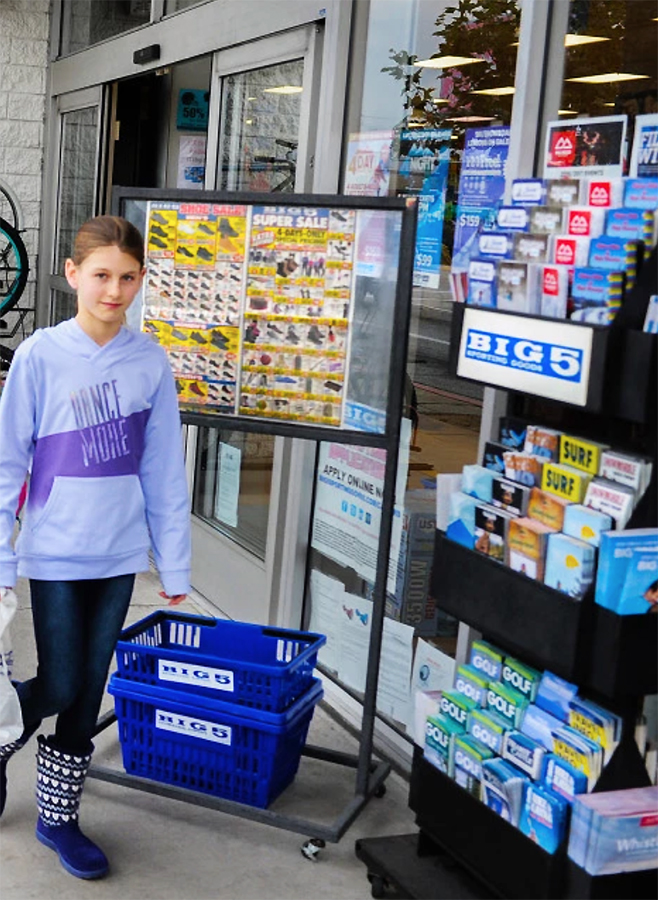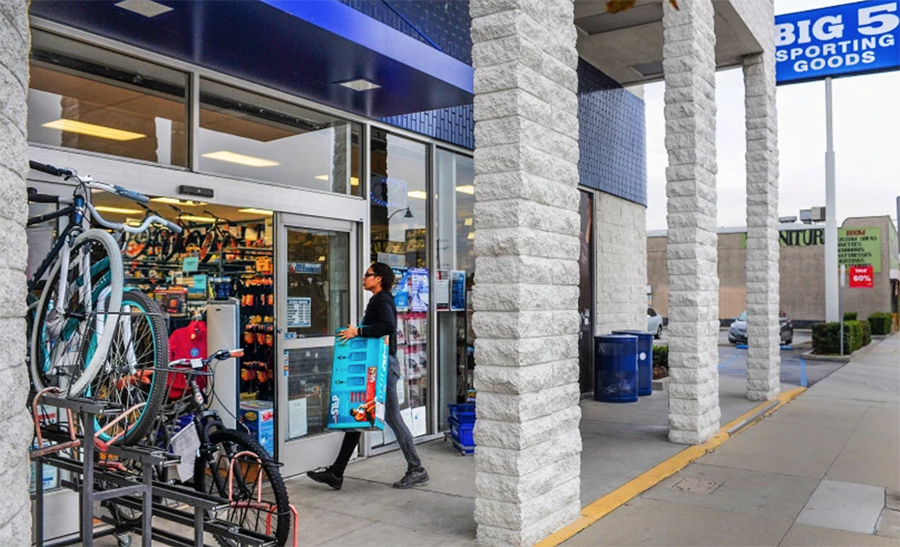 By Thomas J Ryan
By Thomas J Ryan
Big 5 Sporting Goods Corp. delivered a strong first quarter as cold weather boosted its winter business. But the California-based sporting goods chain also warned of a loss in the current quarter due to a later Easter this year and also warned that overall sales appear soft.
On a conference call with analysts, Steve Miller, chairman, president and CEO, said that quarter-to-date sales were down in the low single-digit range, primarily reflecting one fewer sales day in the period-to-date as a result of the Easter calendar shift.
“Given the impact of the calendar shift, along with the weather volatility that we’ve experienced, it’s difficult to get a good read on the underlying run rate of our business,” said Miller. “That said, our sense is that the overall consumer environment in our market is a little soft right now.”
In the first quarter ended March 31, earnings reached $1.7 million, or 8 cents per share, arriving at the upper end of the retailer’s guidance in the range of 4 to 10 cents. The quarter included a charge of 2 cents for the write-off of deferred tax assets related to share-based compensation.
In the year-ago quarter, the retailer lost $1.3 million, or 6 cents, including a 1 cent per share charge for the write-off of deferred tax assets. The prior year had been hurt by “extraordinarily dry and warm weather conditions” that dragged down December’s sales.
Same-store sales increased 4.6 percent for the latest quarter against a decline of 7.5 percent in the year-ago period. Guidance had called for comps up in the mid-single-digit range. Net revenues improved 4.7 percent to $245.3 million.
“The quarter got off to a phenomenal start,” said Miller on the call. January comped up in the high-teens as cold weather drove sales of winter-related product with sales up in the “very high double-digit” range.
In February, comps were up mid-single digits. Said Miller, “While the winter weather and resulting winter product sales continued in an extraordinary manner, much of these gains in February were offset by weakness in baseball and other outdoor product categories, which were negatively impacted by the same weather conditions that drove winter product sales.”
Continued cold weather led to comps declining low-single digits in March despite a positive impact of the Easter calendar shift. The chain had sold down its winter inventory by March.
By category, apparel led the way with an increase in the high-teens. Apparel was Big 5’s strongest performing category in January and February before declining low-double digits in March. Footwear in the quarter increased low-single digits while hard goods decreased low singles.
Gross margins eroded slightly to 30.9 percent in the latest quarter versus 31.1 percent a year ago. The decrease in gross margins largely reflects lower distribution costs capitalized into inventory as a result of reduced inventory levels, which was offset by reduced occupancy and warehouse expense as a percent of sales.
Merchandise margins increased one basis point, reflecting strong early quarter high-margin winter sales, which were partially offset by softness in high-margin spring products. Said Miller, “Our team does an outstanding job of merchandising, promoting and operating our stores to take advantage of demand through these types of seasonal fluctuations that can create strong pockets of demand. As a result, we achieved an excellent sell-through of our winter merchandise at favorable margins.”
A mid-single-digit increase in customer transaction was offset by a modest decrease in average sales year over year.
Beyond the sales gain, the bottom line was helped by a reduction in SG&A expenses to 29.6 percent of sales from 31.4 percent a year ago. The improvement was primarily due to lower print advertising and employee benefit-related expenses that helped offset higher store labor expense due to minimum wage increases as well as higher payment card transaction fees associated with the higher sales volume versus the prior year.
Inventory levels at the end of the quarter were down 8.1 percent versus the prior year, which contributed to borrowing levels decreasing 34 percent year over year. Big 5’s revolving credit borrowings totaled $45.4 million at the end of the quarter, down from $65 million a year ago.
Barry Emerson, CFO, said on the call, “These reductions in our borrowing and inventory levels have substantially strengthened our balance sheet, as we continue to focus on maintaining a healthy financial condition and the flexibility to invest appropriately in our business.”
For the second quarter, same-store sales are expected to arrive in the low negative to low positive single-digit range compared to a decline of 2.1 percent in the year-ago second quarter. The retailer expects to show a loss per share 4 to 12 cents against a loss of 1 cent the prior year. The guidance reflects the combined negative impact of calendar shifts associated with the Easter holiday, during which the company’s stores are closed, and the shift of the Fourth of July holiday one day further this year versus last year.
Miller said the key to the second quarter always revolves around the high-volume periods throughout a Memorial Day, Father’s Day and the start of the summer. Comparisons are expected to become more favorable for these peak periods since last year sales were negatively impacted by worse colder weather conditions over most of its market areas.
Added Miller, “Thus, we believe there is an upside for us to drive sales over the balance of the quarter. We feel well-positioned for a merchandise and assortment and promotion standpoint to capitalize on seasonal demand.”
Miller said the retailer will remain focused on making ongoing enhancements to its product offering, service model and promotional efforts.
“From a product standpoint, we are emphasizing and accelerating the penetration of product categories that differentiate us from the competition and reinforce the strength of our model,” said Miller. “From a marketing standpoint, we’re adjusting our advertising cadence and structure to allow more flexibility to diversify our marketing and messaging across our print and digital platform. This includes continuing to shift a greater proportion of our marketing budget from print and digital programs and testing a number of digital marketing channels. We believe we are well served by our continuing focus of actively managing the cost structure of our business to ensure that we maintain a healthy balance sheet, which provides us the flexibility to capitalize on opportunities if they arise.”
Photos courtesy Big 5 Sporting Goods
















